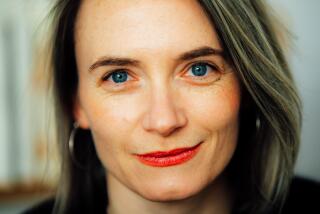A year in the life
FOR those of us who raised our children on Maira Kalman’s whimsical, quirky, exuberantly profound picture books about Max Stravinsky, a dog with poetic aspirations, urbane affectations and an existentialist’s sense of the absurd, the 2005 edition of Strunk and White’s “The Elements of Style,” illustrated by Kalman, was cause for celebration.
Now, even happier news for Kalman’s grown-up fans: She’s collected her monthly columns, a verbal and visual record of a year in her life and thoughts, which ran from May 2006 through April 2007 in the New York Times’ online edition. “The Principles of Uncertainty” is an irresistible book, a graphic diary full of whimsy, worries, philosophical probing, offbeat observations and life-affirming enthusiasms.
Kalman was born in Tel Aviv of Russian-Jewish parents and raised in the Riverdale section of the Bronx. Her heritage comes through in gouache paintings that evoke Marc Chagall in their color-saturated, gravity-defying figures, while the snappy, absurdist, dialectical inflection of her prose carries undertones of Yiddish, recalling the cadences and humor of both S.J. Perelman and Grace Paley. “How can I tell you everything that is in my heart. Impossible to begin,” she begins. “Enough. No. Begin.”
Her paintbrush reveals as much agility as her mind, ranging from the flattened, childlike primitives of her dozen children’s books to Matissean pink-infused still lifes and penetrating portraiture. Her draftsmanship is remarkable; she captures architectural interiors with the panache of a set designer.
The element of style that unites Kalman’s verbal and visual sides is wit. Her personality spills onto the page, not just in her paintings but in her unorthodox associations, conveyed in irregularly capitalized, handwritten commentary that snakes across and around her artwork. True to her Russian roots, she’s got a Dostoevskian sense of doom tempered by an essential optimism and joie de vivre. “What is the point?” she asks repeatedly, calling up Nietzsche, Freud, Wittgenstein and Spinoza, among others, to help probe this puzzle. “How do you know who you are? Half the time I don’t know who I am. Maybe even seven-eighth’s.”
Kalman tells us she reads the obituaries first thing every morning, insisting, “This is not morbid. Just epic. Maybe it is a way of trying to figure out, before the day begins, what is important.” She’s fascinated by the elderly and visits several artists in their 90s, including Louise Bourgeois and Kitty Carlisle Hart, whom she paints in her “pearly pink palace” of an apartment shortly before her death. She notes that Hart dated George Gershwin, who is buried near Kalman’s husband, Tibor. She writes movingly, “My husband died at the age of 49. I could collapse thinking about that. But I don’t want to talk about that now. I want to say that I LOVE that George is nearby under a leafy tree. And Ira Gershwin too. It is very cozy.”
She segues from a painting of Marie Antoinette’s doomed friend Princesse de Lamballe, who was beheaded, to “the realization that we are all (you, me) going to die and the attending disbelief -- isn’t that the central premise of everything? It stops me dead in my tracks a dozen times a day.” But then she adds a conversational antidote: “Do you think I remain frozen? No. I spring into action. I find meaningful distraction.”
What sort of distraction? So many things to collect, marvel at, paint: jewel-like fruit platters, empty boxes, old people walking. The prize of her candy collection is a Cratch bar bought in Cuba, about which she comments hilariously, “It sounds like a disease more than a candy treat, and I like to imagine the naming session.”
Like her alter ego Max in “Swami on Rye: Max in India,” Kalman’s mind bounces “from fish to knish to gibberish,” and “when ridiculous knocks,” she answers. Readers will want to be right behind her at the door.
More to Read
Sign up for our Book Club newsletter
Get the latest news, events and more from the Los Angeles Times Book Club, and help us get L.A. reading and talking.
You may occasionally receive promotional content from the Los Angeles Times.








